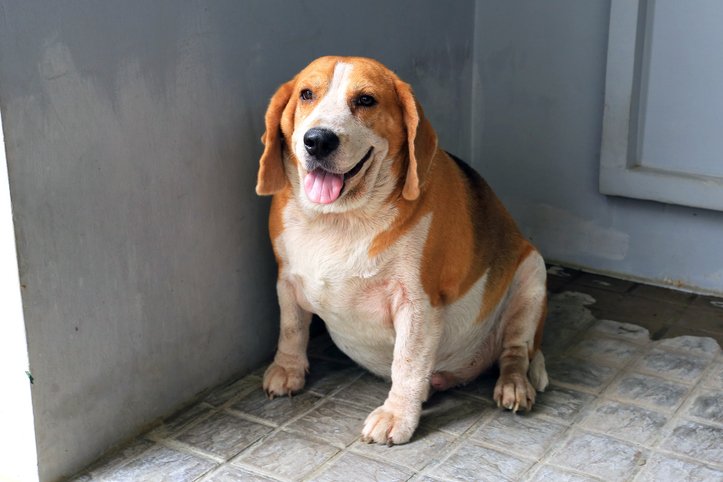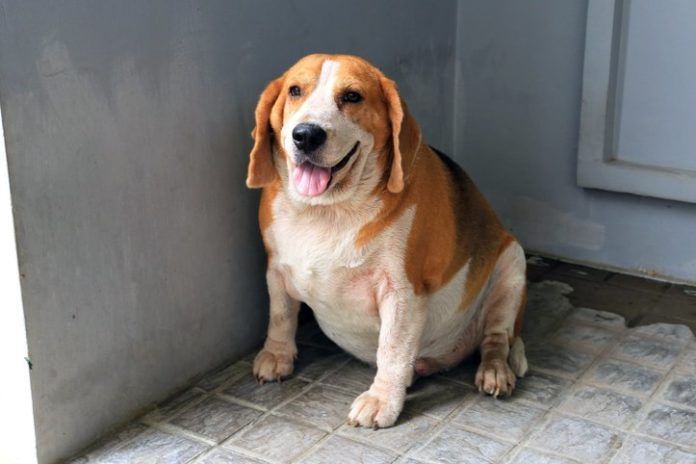
Photography Dejchai Kulawong iStock / Getty Images Plus
Obesity in dogs is a problem that veterinarians are seeing increasingly in recent years. In fact, obesity is considered the most common preventable disease in dogs in North America. Approximately one in four dogs is considered obese, with 50 percent weighing more than they should.
Of all these overweight dogs, only half of the owners actually believe their pets are overweight — even after the veterinarian has discussed the animal’s condition — and very few have any sense of how many calories they are feeding their pets each day.
“Obesity is an epidemic in the veterinary field, but the biggest barrier you’re likely to face in this battle of the bulge isn’t the pet’s waistline — it’s the client’s perception,” says Deborah Linder, DVM, head of the Tufts Obesity Clinic for Animals.
At the clinic, a veterinarian completes a physical exam to assess obesity, feeling over the rib cage by the animal’s armpit, “where tissue should be no thicker than the back of your hand,” describes Dr. Linder. Another sign of appropriate weight is a tuck in the belly, similar to an hourglass figure.
A Dog Nutrition Primer
One thing that owners need to realize is that we need to cut calories, not nutrients. So reducing the amount of a dog’s food is not necessarily the way to proceed when putting your dog on a diet. First discuss with your dog’s veterinarian the option of a low calorie dog food before taking matters into your own hands by reducing quantity.
Some owners also don’t think it’s a problem if their pet is a bit overweight, and some actually find it cute. But a lifetime study of Labrador retrievers showed that dogs live almost two years less when they are overweight. Additionally, overweight dogs tend to get dog diseases younger than thin dogs. These are compelling arguments to encourage us to do what’s best for our pets, even if it takes time, commitment and patience.
If you are in the habit of giving your dog treats, it is important to factor these into his daily caloric intake. Try to find low calorie dog treats like bits of cooked, lean meat, carrot sticks, small pieces of baked potato, apple slices or even broccoli.
Providing regular exercise can be good for both of you, so try to incorporate more walks into your routine. You could even pay a dog walker to give your pet some extra exercise when you’re at work. The important thing is to realize this type of goal does not happen overnight, so stay patient and reach out to your veterinarian for advice if you hit any roadblocks.





